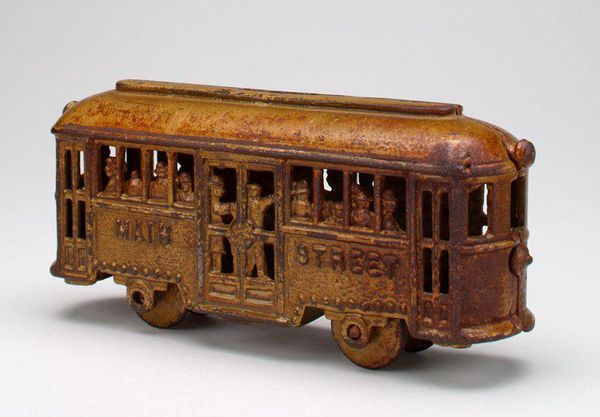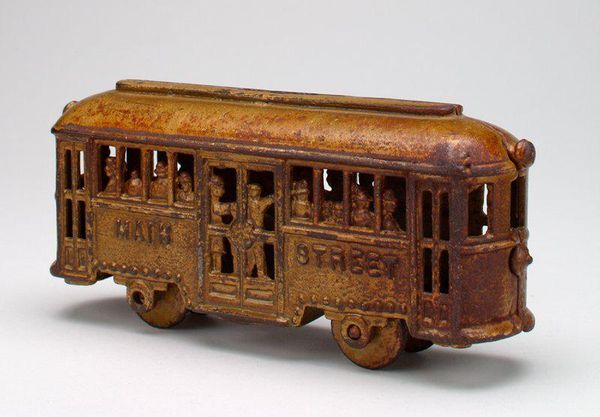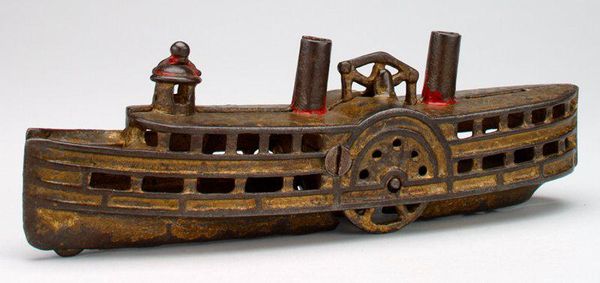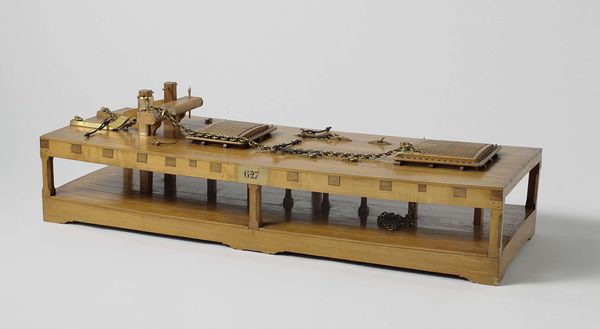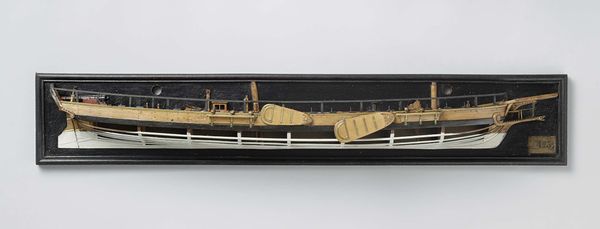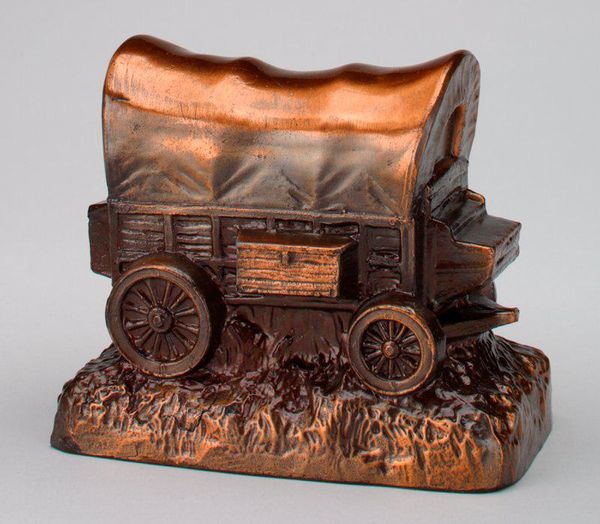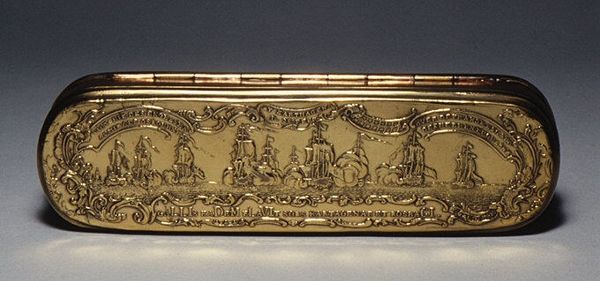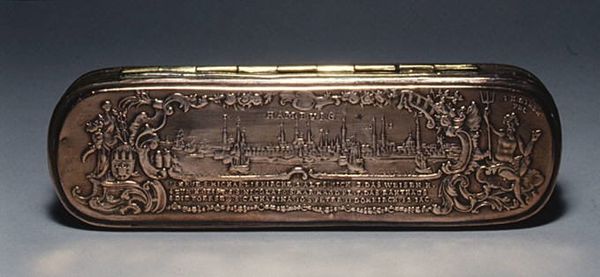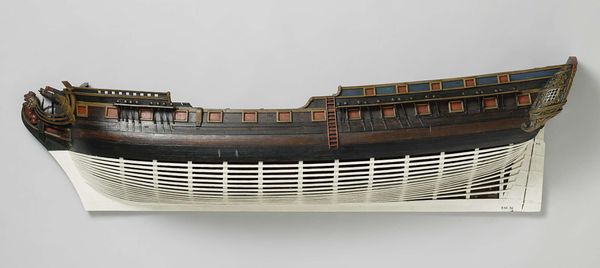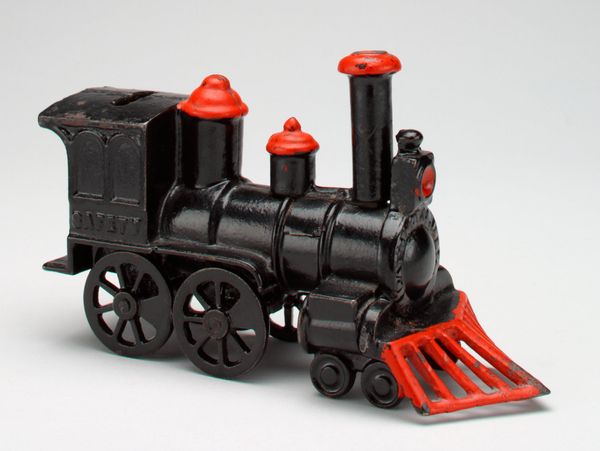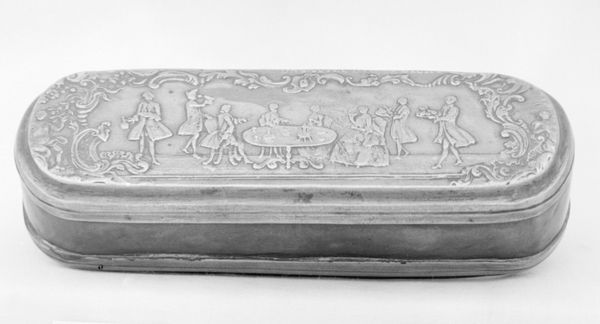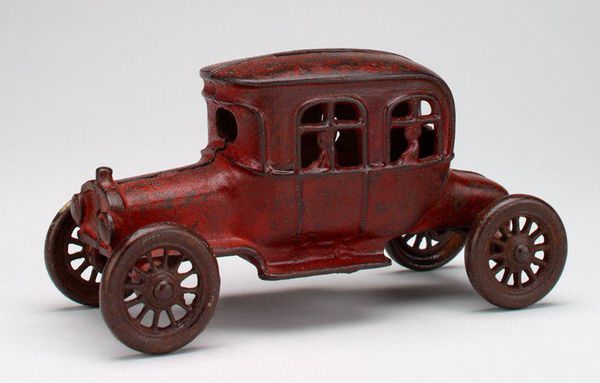
-Mohawk and Hudson Railroad- still bank c. 1930
0:00
0:00
metal, bronze, sculpture
#
metal
#
sculpture
#
bronze
#
figuration
#
sculpture
Dimensions: 2 3/8 x 7 x 2 1/4 in. (6.03 x 17.78 x 5.72 cm)
Copyright: No Known Copyright
Editor: So, here we have a -Mohawk and Hudson Railroad- still bank, crafted around 1930 by the Van Gytenbeek Manufacturing Company. It seems to be made of metal, perhaps bronze. It feels like a commentary on American progress... I'm struck by the depiction of westward expansion beneath the train. What do you make of it? Curator: What's most interesting to me is the layering of materials and their symbolic weight. You've got the industrial train rendered in metal – a clear symbol of capitalist ambition – juxtaposed against the relief carvings below depicting scenes that are, to be frank, a sanitized view of settler colonialism. Editor: A sanitized view? Curator: Absolutely. Consider the labor that went into constructing railroads – often exploitative. And then, reflect on what the railroad *meant* for Indigenous communities, whose lands were divided and resources extracted for the benefit of industry. The still bank's metal – most likely produced through intense mining efforts – becomes a physical embodiment of those unequal power dynamics. Editor: So, the material itself tells a story about production and its consequences. It's a little chilling how an object meant for savings can carry such weight. Does the bank as a container affect your reading? Curator: Precisely! It domesticates the ruthless advance of industry, encourages participation in the very system it portrays. By turning it into a commonplace object of the home and consumption, you become complicit in it by participating. Do you agree? Editor: That gives me a lot to reflect on: the steel as both infrastructure and instrument and its connection to displacement. It’s interesting to observe an object created from capitalist ideas, used for consumerism, commenting on capitalism itself. Curator: Right! It complicates our understanding of progress in America. The choice of materials implicates our own consumption habits within the very issues being illustrated.
Comments
No comments
Be the first to comment and join the conversation on the ultimate creative platform.
